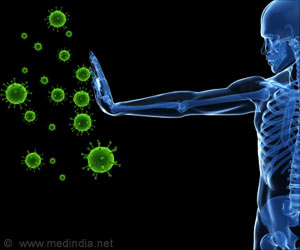World Suicide Prevention Day helps to raise awareness on how to prevent suicide. This year (2020), the theme is 'Working Together to Prevent Suicide.’ During coronavirus (COVID-19) pandemic, suicide cases have drastically increased & it is essential to stop and prevent suicides.
Highlights :
- World Suicide Prevention Day is observed on the 10th of September every year to address suicide as a major public health problem
- The aim of observing the World Suicide Prevention Day is to raise awareness at community-level, and take effective measures to prevent suicide globally
- The theme of World Suicide Prevention Day in 2020 is 'Working Together to Prevent Suicide.'
The last comparable crisis was the pandemic of Spanish Flu in 1918–19 in which about 500 million people were infected with the flu virus and at least 50 million people died around the world. The Spanish Flu epidemic was associated with an increase in death by suicide due to similar issues as with the current COVID pandemic of decrease in social integration and interaction.
In 2003 during the severe acute respiratory syndrome (SARS) outbreak in Hong Kong, there was an increase in suicides among the population over the 65years due to fears of being a burden to the family, general anxiety, social isolation and psychological distress.
The COVID-19 is a global crisis and there is a need to have collective efforts to deal with this crisis on all fronts including taking care of our mental and emotional health. One needs to make efforts to maintain connectedness and solidarity despite the physical distance. We need to protect individuals with a previous history of suicidal thoughts, panic and stress disorder, low self-esteem and low self-worth who are easily susceptible to depression and suicide at such times. We require to look for clues when our loved ones say things like - ‘I’m tired of life’, ‘no one loves me,’ ‘leave me alone’ and so on.
This year on the ‘World Suicide Prevention Day,’ the World Health Organization (WHO) collaborates with the International Association for Suicide Prevention (IASP) and the World Federation for Mental Health (WFMH) to observe this day.
The WHO considers suicide as a public health priority. WHO released the first World Suicide Report "Preventing Suicide: A Global Imperative" in 2014. Through observing this day,the WHO aims to encourage countries to develop effective suicide prevention strategies using public health approaches. The WHO member states have committed themselves to the reduction of suicide rate by 10% by 2020.
WHO Sustainable Development Goals: By 2030 aims to reduce by one-third of the premature mortality associated with non-communicable diseases through prevention and treatment, and promote mental health and well-being.
Read More..
Importance of World Suicide Prevention Day
Suicide is among the top twenty leading causes of death that kills close to 800,000 people annually. This equals one suicide every 40 seconds. Suicide is the world's third leading cause of death among 15 to 19-year-old's. Around 79% of the global suicides occur in the middle to low-income countries.For every suicide, many people make attempts to commit suicide and much more seriously contemplate about the same.
Suicide has a ripple effect on families, communities and the nation.
Suicide is mostly an act of impulse, though people with a history of mental illnesses such as depression are at greater risk. Suicide is a preventable cause of death that can be prevented through timely and cost-effective intervention.
Around 20% of global suicides result from self-poisoning with pesticides, especially among the farming communities in low- and middle-income countries. Other methods of suicide are hanging and the use of firearms.
Working Together to Prevent Suicide
Every year, the World Suicide Prevention Day entails a theme. The theme aims to highlight a preventable aspect of suicide and focus on it. The theme for the year 2020 'Working Together to Prevent Suicide' has been carried forward from 2019.A few themes from the past include "Suicide Can Be Prevented!" from 2003, "Suicide Prevention across the Globe: Strengthening Protective Factors and Instilling Hope"; in 2012, and in 2016, the theme was "Connect, Communicate, Care."
Who are at Risk of Suicide?
A history of mental illness increases the risk of suicide, even in high-income countries. The inability to deal with life-changes, such as broken relationships, financial loss, chronic pain, or illness, also makes people vulnerable to suicide.Suicide rates are high among minority groups, including indigenous, ethnic, the lesbian-gay-bisexual-transgender-intersex (LGBTI) groups and prisoners.
Observing the World Suicide Prevention Day Amid the Pandemic
World Suicide Prevention Day can be observed from our homes' comforts while staying safe, yet connecting with people and spreading the message virtually via social media.Hashtags like #WorldSuicidePreventionDay, can be used to spread messages about suicide prevention via social media platforms. Such platforms can be used to identify people with risk behaviors for suicide.
On World Suicide Prevention Day, people should access resources like meetings, events, books, or films that help them learn about suicide and means to prevent them.
Suicide Statistics
- Suicide is the 10th leading cause of death in US
- For every 25 attempted suicides, there is one suicide
- Suicide kills 1 in 100,00 children between 10 to 14 years of age annually
- Transgender, gay or lesbian children are three times more likely to commit suicide compared to their straight counterparts
- Around 12.7 among 100,000 young adults die every year by suicide
- Females are more prone towards than men, and most women use self-poisoning to commit suicide
- The divorced and widowed elderly are more likely to attempt suicide
- Around 41% belonging to the transgender community have attempted to commit suicide
Means to Prevent the Burden of Suicide
Suicides are a preventable cause of death, which can be catered to with effective measures at the population, sub-population, and individual levels. Few measures include:- Restricting access to means of suicides like pesticides, medications, or firearms
- Interventions at school, work, and homes
- Identifying and addressing mental disorders like depression, bipolar disorder
- Addressing alcohol and substance abuse
- Removing stigma against mental health and suicide
- Follow-up care and counseling for people who have attempted suicide
References :
- Suicide - (https://www.who.int/news-room/fact-sheets/detail/suicide)
- Suicide Prevention - (https://www.who.int/health-topics/suicide#tab=tab_1)
- The impact of the COVID-19 pandemic on suicide rates - (https://academic.oup.com/qjmed/advance-article/doi/10.1093/qjmed/hcaa202/5857612)
- World Suicide Prevention Day (WSPD) 2019 – Home - (https://www.iasp.info/wspd2019/)
Source-Medindia











